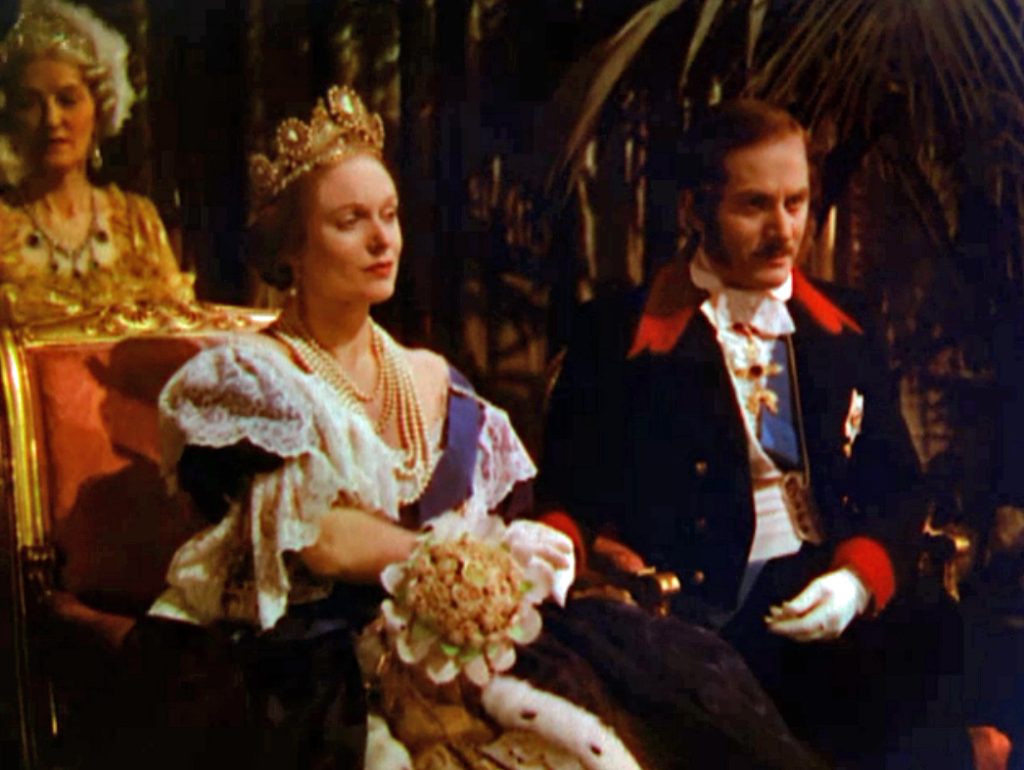Today I had my first glimpse of the cover of The British Monarchy on Screen, the forthcoming collection of conference papers that will include my own contribution, ‘Walbrook’s Royal Waltzes: Anton Walbrook as Prince Albert in Victoria the Great (1937) and Sixty Glorious Years (1938.)’
This was presented as a paper at The British Monarchy on Screen conference which took place at Senate House, University of London on 23 November 2012, and was accompanied by clips from the two films mentioned above, as well as from Walzerkrieg (1933) – in which AW stars as Johann Strauss – showing a waltz scene at the court of Queen Victoria. Below are some of the other images used to illustrate my paper:
The ISBN has been confirmed as 978-0-7190-9956-4 but it looks like the book won’t be published until February 2016. In addition to my paper, there are some fantastic contributions covering a range of topics, including Dr Steven Fielding on ‘The heart of a heartless political world: screening Victoria’ (which also discusses the two AW films), Professor Ian Christie on ‘A Very Wonderful Process’: Queen Victoria, photography and film at the fin de siècle’, Victoria Duckett on ‘Her Majesty moves: Sarah Bernhardt, Queen Elizabeth, and the development of motion pictures’ plus studies of more recent screen portrayals of monarchy such as The Queen (Frears, 2006), the Showtime cable TV series The Tudors (2007-2010) and The King’s Speech (Hooper, 2010.)
An issue that arose several times during the conference was the way that the monarchy and film-makers use each other’s power for their own gain: royalty looks to prestige films to enhance public image, while cinema promotional materials (such as this advert) display lavish regalia suggesting the seal of royal approval.





Hello,
It seems very interesting especially your article.
IMO, i don’t find that Anna Neagle is overshadowed by Anton Walbrook but it is true that the two movies are really better when Albert is here: the scenes with him are the best in term of script and dialog; it is really obvious in the first movie.
In fact, I find there is a good chemistry between Neagle and Walbrook, even if Neagle seems a little bit “mechanical” in her way of acting.
Thanks for this blog,
Marieno.
Hello Marieno, thanks very much for your comment. I think you’re right about the chemistry between them, and certainly both films work best when Albert is on screen. The ‘mechanical’ feel of Neagle’s acting is more apparent when she is alone, but that is perhaps due to the nature of royalty – always having to hover between the private person and the public office. Monarchs are often rather mechanical in their interactions with other people, and I think this is a real challenge for actors who try to portray this.
Pingback: the british monarchy on screen (2) – Dark Lane Creative
Pingback: Anton Walbrook and the Courtney Affair - Dark Lane Creative
Pingback: The Fair Toxophilite - dance photographs from the school of Madame Espinosa - Dark Lane Creative